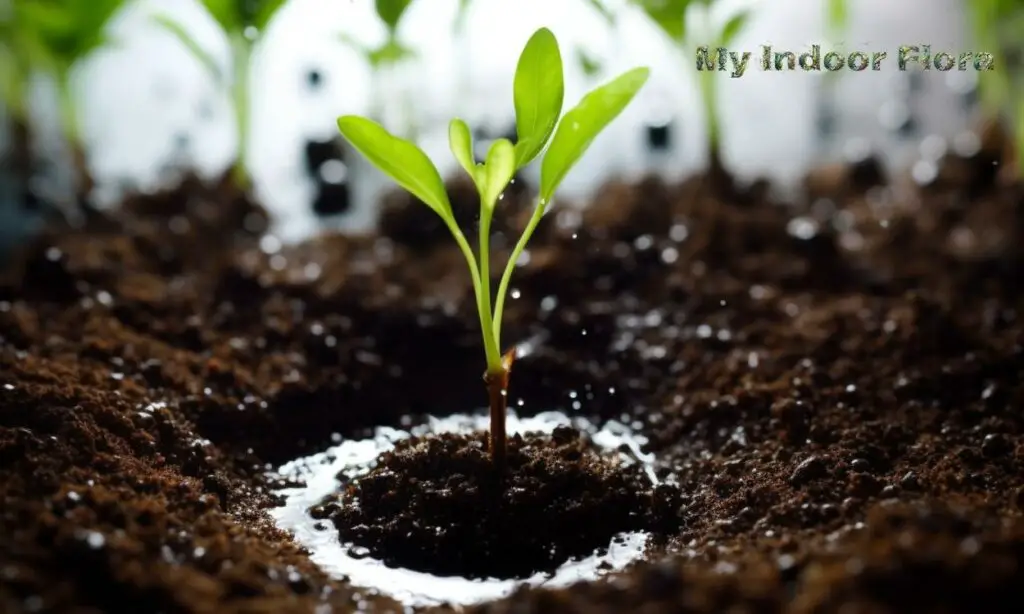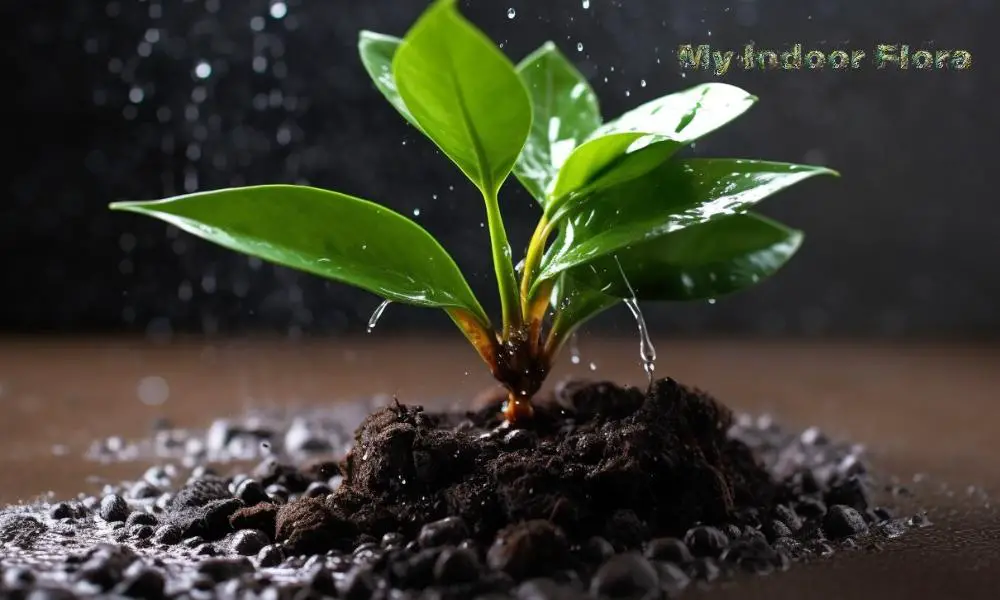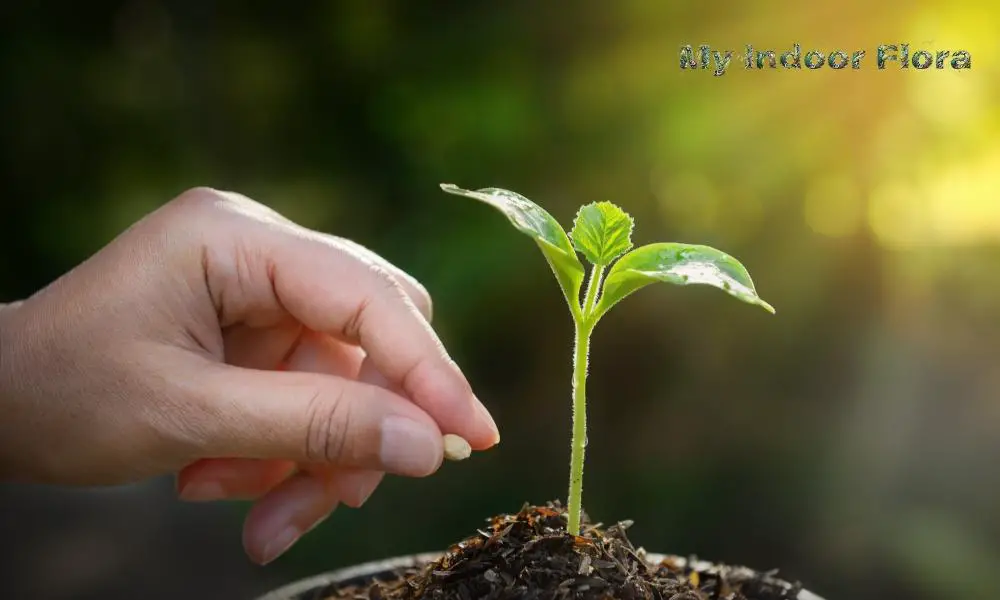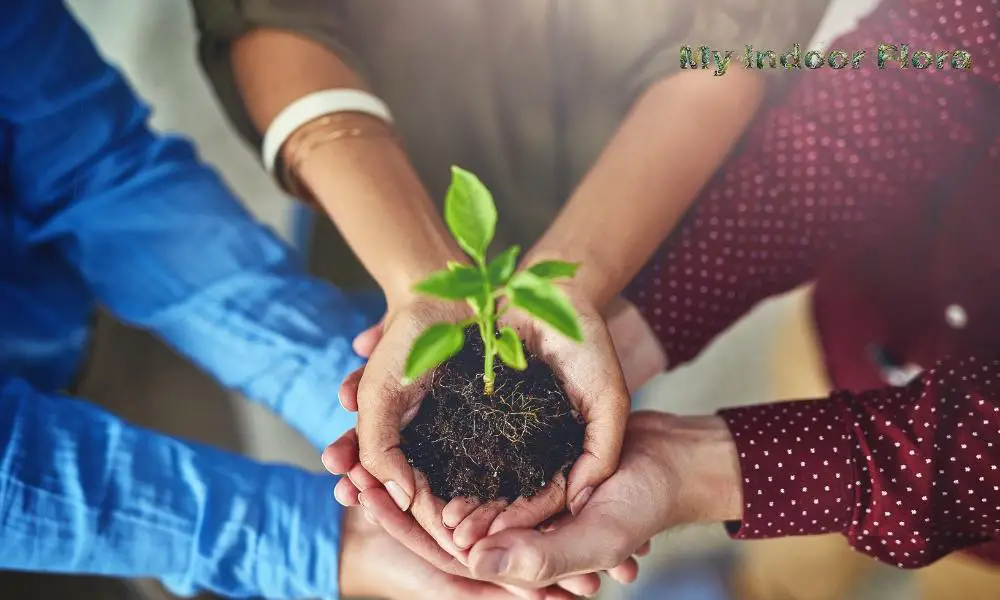Indoor plant soil drainage refers to the ability of the soil to effectively manage excess water and maintain proper moisture levels, preventing issues such as root rot and oxygen deprivation. On the other hand, soil aeration is the process that allows oxygen to penetrate the soil, enabling roots to access the oxygen needed for respiration, promoting beneficial microbial activity, and preventing soil compaction.
The role of drainage and aeration in indoor plant soil is crucial for maintaining healthy and thriving plants. According to a study published in HortScience, the right balance of water and air in the soil is essential for optimal plant growth, nutrient uptake, and overall plant health.
In this comprehensive article, we will explore the importance of drainage and aeration in indoor plant soil, providing practical tips and actionable examples backed by scientific research to help you create the ideal environment for your indoor plants.

Why is proper drainage essential for indoor plant soil?
Proper drainage plays a crucial role in maintaining a healthy environment for your indoor plants. It prevents root rot, balances moisture and oxygen levels, and supports nutrient absorption and overall plant health.
Preventing root rot
Root rot is a common issue in indoor plants, often caused by excess moisture in the soil. A well-draining soil ensures that water doesn’t linger around the roots for too long, preventing the development of root rot. According to a study published in the Journal of Plant Pathology, one of the primary causes of root rot is the presence of waterlogged soil, which creates an anaerobic environment conducive to the growth of harmful microorganisms.
Balancing moisture and oxygen levels
Adequate drainage helps maintain the right balance between moisture and oxygen levels in the soil. Plants require both water and oxygen to survive, and if the soil is too wet or too dry, the plant’s root system can suffer. A well-draining soil allows excess water to flow away from the roots, ensuring that they receive the right amount of oxygen needed for healthy growth.
How can you ensure good drainage in indoor plant soil?
Ensuring proper drainage in your indoor plant soil involves choosing the right potting mix, using pots with drainage holes, and employing techniques to improve drainage in existing soil.

Choosing the right potting mix
A well-draining potting mix is essential for promoting proper drainage in indoor plant soil. The ideal potting mix should contain a combination of ingredients, such as:
- Peat moss or coconut coir for water retention
- Perlite, vermiculite, or sand for drainage
- Bark, compost, or aged manure for added nutrients
You can find commercial potting mixes designed for indoor plants or create your own by combining these ingredients.
The importance of using pots with drainage holes
Using pots with drainage holes is another critical factor in ensuring proper drainage for indoor plants. These holes allow excess water to escape, preventing root rot and maintaining a healthy balance of moisture and oxygen in the soil.
When selecting pots for your indoor plants, look for those made of materials like terracotta, which is porous and promotes better drainage than plastic pots. If you must use a pot without drainage holes, consider placing a layer of pebbles, gravel, or activated charcoal at the bottom of the pot to help prevent waterlogging.
Techniques for improving drainage in existing soil
If your indoor plant’s soil isn’t draining well, consider adding amendments like perlite, sand, or bark to improve its drainage properties. Repotting your plant into fresh, well-draining soil can also help address drainage issues.
What is the role of aeration in indoor plant soil?
Aeration is vital for indoor plant soil as it facilitates root respiration and growth, promotes beneficial microbial activity, and prevents soil compaction and root suffocation.

Facilitating root respiration and growth
Proper aeration in the soil allows oxygen to reach the plant’s roots, which is essential for respiration and growth. According to a study published in Plant Physiology, root respiration rates increase when oxygen is readily available, resulting in healthier and more vigorous growth.
Promoting beneficial microbial activity
Well-aerated soil supports the growth of beneficial microbes that aid in nutrient uptake and help fight off plant pathogens. These microbes thrive in an environment with sufficient oxygen, and by maintaining proper aeration in your indoor plant soil, you can create an ideal habitat for them to flourish.
Preventing soil compaction and root suffocation
Compacted soil can restrict the flow of air and water, leading to root suffocation and reduced nutrient uptake. By ensuring adequate aeration in your indoor plant soil, you can prevent compaction and create a healthier environment for your plant’s roots to grow.
How can you maintain proper aeration in indoor plant soil?
Maintaining proper aeration in your indoor plant soil involves selecting a well-aerated potting mix, employing techniques to improve aeration in existing soil, and monitoring and addressing root-bound plants.
Selecting a well-aerated potting mix
Choosing a potting mix with ingredients that promote aeration is crucial for maintaining healthy indoor plant soil. Some ingredients to consider include:
- Perlite and vermiculite for increased porosity
- Coconut coir or peat moss for improved structure
- Composted bark or aged manure for added nutrients and texture
You can find commercial potting mixes designed with aeration in mind or create your own by combining these ingredients in the right proportions.
Techniques for improving aeration in existing soil
If your indoor plant’s soil is compacted or poorly aerated, consider the following techniques to improve aeration.
- Gently loosening the soil surface with a fork or your fingers, being careful not to damage the roots.
- Incorporating amendments like perlite, vermiculite, or coconut coir to increase the soil’s porosity and aeration.
Monitoring and addressing root-bound plants
Root-bound plants can suffer from poor aeration, as their compacted roots struggle to access the oxygen they need. To maintain proper aeration, it’s essential to:
- Regularly inspect your indoor plants for signs of being root-bound, such as roots growing out of the drainage holes or circling the surface of the soil
- Repot and prune the roots of root-bound plants to alleviate the issue and encourage healthy growth
How do drainage and aeration work together to support indoor plant health?
Drainage and aeration are interconnected factors that work together to create an optimal environment for your indoor plants. Proper drainage ensures that the soil doesn’t become waterlogged, which in turn supports healthy aeration. Additionally, well-aerated soil promotes efficient nutrient uptake and helps prevent pest and disease issues.

The interconnected nature of drainage and aeration
Good drainage helps prevent soil compaction, which can hinder aeration. Conversely, well-aerated soil allows water to flow more freely through the soil, supporting proper drainage. Both factors are necessary for maintaining the right balance of moisture and oxygen in the soil, which is vital for plant health.
How proper drainage and aeration influence nutrient uptake
Healthy root systems rely on the right balance of moisture and oxygen to effectively absorb nutrients from the soil. When drainage and aeration are well-maintained, plants can access the nutrients they need for optimal growth.
The impact on pest and disease prevention
Proper drainage and aeration can help prevent common indoor plant pests and diseases. Overly moist or compacted soil can attract pests like fungus gnats and encourage the growth of harmful pathogens, such as those that cause root rot. By maintaining the right balance of drainage and aeration, you can create an environment that’s less conducive to these problems.
Troubleshooting common drainage and aeration issues
If your indoor plants are struggling, it’s essential to diagnose and address any drainage or aeration issues. Common problems include over-watering, under-watering, and poor drainage or aeration in challenging environments.
Diagnosing over-watering and under-watering problems
Over-watering and under-watering can both have detrimental effects on your indoor plants. Signs of over-watering include yellowing leaves, wilting despite wet soil, and root rot. On the other hand, under-watered plants may exhibit drooping leaves, dry soil, and stunted growth. To address these issues, monitor your watering habits and adjust them according to your plant’s specific needs.
Addressing poor drainage and aeration in challenging environments
Indoor environments with high humidity or poor air circulation can create challenges for maintaining proper drainage and aeration. To improve these conditions:
- Increase air circulation using fans or by opening windows
- Use dehumidifiers to control humidity levels
- Choose plants that are better suited to high humidity or low light environments
Tips for adapting to plant-specific drainage and aeration needs
Different plants have varying drainage and aeration requirements. To ensure your plants thrive, research their specific needs and adapt your potting mix, watering habits, and pot selection accordingly. For example, succulents and cacti require well-draining soil and infrequent watering, while tropical plants may need more moisture and aeration to thrive.
Conclusion
In conclusion, drainage and aeration play a pivotal role in maintaining healthy indoor plant soil. By understanding the interconnected nature of these factors and implementing the practical tips provided in this article, you can create an optimal environment for your indoor plants to thrive. Remember to monitor your plants regularly and make adjustments as needed to keep them happy and healthy.
